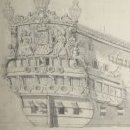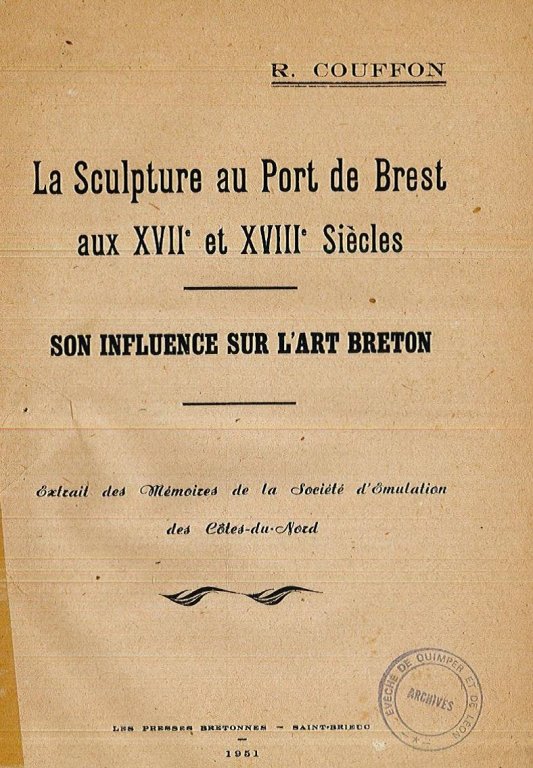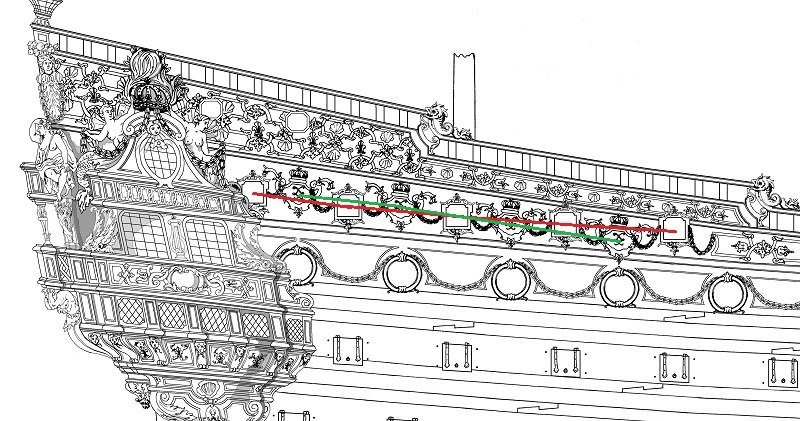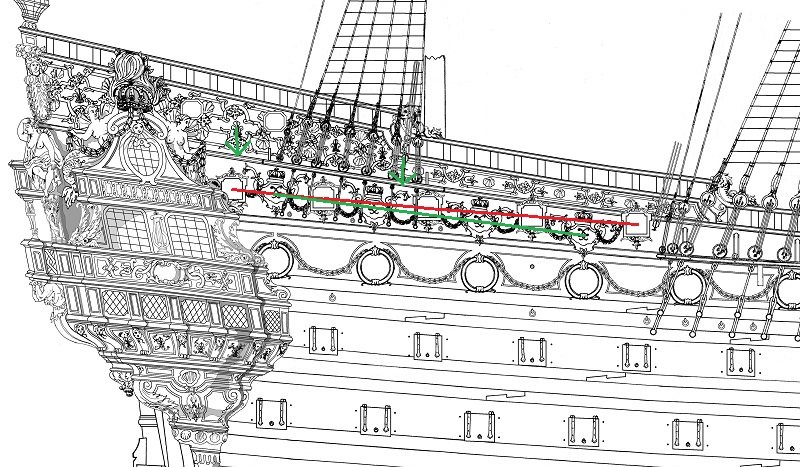-
Posts
53 -
Joined
-
Last visited
Content Type
Profiles
Forums
Gallery
Events
Everything posted by CédricL
-
Hello all, First thanks all for your kind words, both fingers are OK now, but the problems with the cats (4 at home) are not yet solved. I even found one of them sleeping in one of the SR hulls resting in a stash…. Christian, If I had to do such support, I would use the Heller one as template to make another one in wood, it's not a terrific job and would be far more real. But it's your kit. I scrapped the existing wales on the hull and there's absolutely no problems with solidity. In fact, the thickness of the plastic becomes obvious if you'll have to make new gunports. Living with uncomfortable features is also evident if you want to deal with those ships, no plans and in the case of the first SR not even the smallest drawing before 1688. At least you'll have a good basis to transform your SR into le St Philippe (this without speaking about the current problems of the kit itself).
- 244 replies
-
- heller
- soleil royal
-
(and 1 more)
Tagged with:
-
Hello Marc, Heinrich, Well, back after a looooong time ! Just for info, I got some health's issue (two broken fingers and cerebral arthrosis, not yet solved) plus a promotion at work, wich means a little more money but foremost many more work. I did not cancelled my project on La Reyne but took some time to search for the building way used by Hubac (in french: tablette et trébuchet). This is not really essential for my current project but really nice to learn those things. In between, I also took a little of my freetime to move to the XX century with two plastic kits of russian battleships, but... I also think that the hull of le SR, being the one of 1692, could be used as basis for another project but don't really know if La Reyne would be the best to choose, just the 16 gunports with the sheer of the decks, the heights between them and the wales are serious problems to solve. And I even don't speak about the fact that the bowsprit has to be lowered from one deck, the masts to be slightly moved and adjusted to their correct dimensions etc etc etc. Knowing the dimensions of the second SR, it would be possible to find another ship of the time close to those with less surergy to do. My two cents: the books of JC Lemineur and J. Boudriot (74-120 guns ships) are "the one to have" for such a project. I will try to come more often to see your projects now. Regards. Cédric
- 244 replies
-
- heller
- soleil royal
-
(and 1 more)
Tagged with:
-
Hello Marc, Damn, I did'nt understood you would modifiy the forepart of the hull. It means that you'll have to fix the decks also. But that's a great job !! Glad to see I'm not the only one to "destroy" my plastic kit
- 2,437 replies
-
- heller
- soleil royal
-
(and 9 more)
Tagged with:
-
Hello Marc, Quite a massive surgery but no doubt that the final result will be far better ! Have a nice day.
- 2,437 replies
-
- heller
- soleil royal
-
(and 9 more)
Tagged with:
-
Good evening Morgan, Well, another SR...at least, you'll have the chance that this ship is so popular Just one point about your decks: all the planks must be nailed on the beams, as you figured only their extremities you should also mark the other ones in order to gain a more real appearance. Good luck with your build. Regards. Cédric
- 50 replies
-
- soleil royal
- first build
-
(and 1 more)
Tagged with:
-
Marc, I just sent you the file (at your mail adress).
- 2,437 replies
-
- heller
- soleil royal
-
(and 9 more)
Tagged with:
-
Hello all, For those interested by this french article (in PDF), just send me a PM.: Have a nice day.
- 2,437 replies
-
- heller
- soleil royal
-
(and 9 more)
Tagged with:
-
Thanks you Marc and Shipmodel, Well, about that problem, you're probably right; but without any avalaible informations, it will be extremely difficult to locate precisely the forward or aft gunport. Even the VDV drawing is not of great help in this case. So I had to make a choice and simply used the way given by J.C. Lemineur in his book "Les Vaisseaux du Roi Soleil". Have a nice day.
-
Cutting the hull at the waterline : I simply glued both hull halve below the waterline. Then, I glued the support of the mainmast onto the bottom of the inner hull, and then placed the first and second decks but without gluing them (blue-tack is really useful here). I took the mainmast pieces, put them into place and made a small mark in order to find later a kind of correct heigth for that mast. A thin layer of grey primer is then applied to the hull at the level of the waterline. Mounting quickly the support of the ship then place the hull on it, be carefull that the waterline is not parallel to the keel. An important point is the fact that the engraved waterline is far too low. In order to obtain something conform to that era, you’ll have to know that the lower side of the lower row of gunports amidship was usually only 5 to 6 feet above the sea ! At Heller scale (1/100), it means that the waterline should be placed 16 millimeters (or 5/8 of an inch at 1/100 scale) under the central gunports. I decided to place the waterline just under the first wale. Using a marking gauge with an XActo n°11 blade in place of the pen, I carefully scribed the new line. Then, I cutted both half pieces with a metal saw ; working slowly and verifying constantly that the structure « hull and decks » did not move. After that, both half hulls are seperated, removing the blue tack of the decks and the cuttd area is sanded. That’s it : Here begin the real work (and quite a boring one). First I used the existing gunport lids to close the existing gunports. Some filling will be needed later... Once this was done, on the lower parts of the hull, comes the sanding stage. It’s really a long process, and in my case, quite difficult due to the brittleness of the plastic. I would strongly recommand to use an electrical tool like the Proxxon PS 13 for those who attempt this. In between, I began to redraw on Autocad the different decks, using those of the kits as templates, even if I’m aware of relative problems to solve : the absence of camber (they are strictly flats) and probably incorrect heigths between them. But at least, I could use them to implement the new rows of gunports, once they will be printed at scale 1:1 of the kit. A suivre...
-
Good evening everyone, A few progress on that build... The known dimensions of La Reine are (given in french feet, the multiplier to convert them to the modern imperial foot is 1.066) : 155 feet lenght between the outer faces of the stem and sternpost. 42 feet breadth at the main beam, notice that on French ships, this dimension is taken to the inside of the outerplanking of the ship (wich, generally, was 4 inches thick except for wales, which were approximatively 8 to 9 inches thick for a first rate). 19 and a half feet for the depth of the hold, this is determined between the upper side of the keel and the upperside of the main beam (without the camber). The overall depth of the stem is still quite important ; a dimension that is more or less 1/5 the length of the ship between stem and stern. But this placed too much of a burden on the longitudinal connections, wich is why it was progressively reduced to the 1/9 of the lenght. Before 1670, lacking clear royal decree, the distance between gunports was decided by the chief constructor. That information, along with the breadth of the gunports is nevertheless fundamental because the sum of both give the length between the stem and stern. Laurent Hubac commonly used gunports of 32 inches breadth and 30 inches heigth. At that time, those gunports could carry guns ranging from 18 to 36 pounds, following the avalaible guns in the arsenal. Therefore, knowing that the length of the ship was 155 feet, (or 1860 inches) and that 16 gunports were to be placed we’ll obtain the following result : 1860 - (16x32) = 1348, divided by 17 = 79 inches or 6 feet 7 inches between gunports. You will then simply haveto convert it to the desired scale. With this, it’s possible to begin the work on Heller’s hull. I’ve decided to present the ship as a « waterline » model, because the lack of informations about how Laurent Hubac designed the bottom part of the frames and furthermore to gain space ; maybe also because it’s only a plastic ship model and a kind of « mock-up » in my mind. I’ll see later if avalaible informations and help can make me produce a correct shaped hull for a POF model in wood.
-
Thank you very much Heinrich, I'm currently struggling with my Harrap's, as all my written progresses are in French and have to be translated in English (with Hubac's Historian's help). Progresses will follow between job, family and all others aspects of life. That also means that "planning" is a word I don't know about. I'm not only busy with the kit but also with acad drawings, who are extremely time consuming despite the help I've aslo received from Michel Saunier about the hull; lots of things yet to solve mainly due to the lack of graphic documents about that "forgotten ship". Best wishes. Cédric
-
Hello Marc, That's a great job you did ! (and something I will not try I think, how many holes ?)
- 2,437 replies
-
- heller
- soleil royal
-
(and 9 more)
Tagged with:
-

Le Soleil Royal by Nek0 - 1/72 - Marc Yeu
CédricL replied to Nek0's topic in - Build logs for subjects built 1501 - 1750
As great as usual ! Que dire de plus....- 205 replies
-
- ship of the line
- soleil royal
-
(and 2 more)
Tagged with:
-

SOLEIL ROYAL 1669 by michel saunier
CédricL replied to michel saunier's topic in - Build logs for subjects built 1501 - 1750
Really impressive work of carving. I think it's a 1 piece of wood no ? Bravo ! -
Hello Marc, It really become an impressive model !! Grrrrrreat work. (PS: I made some "progress" on my build and will translate the text in order to post now only here in place of la Royale' forum for the future. Will send you a PM later). Have a nice day.
- 2,437 replies
-
- heller
- soleil royal
-
(and 9 more)
Tagged with:
-
Marc (Neko), I suppose that this principe of iron bolts per "member " (as given by G. Delacroix) is also valable for the wales ? Till now, I'm unable to find the size of the head for those bolts (wales) but clearly I suppose that the ones of the hull herself stayed hidden under protective coats and paints. Your plans of the SR rocks !! Were did you fins the correct informations about the bottom of the hull (in french: les façons avant et arrière) ? That's will be a big problem for me in order to draw the hull of La Reyne. Marc (Hubac's Historian), About headaches, I was busy with the sheer of the decks, scrapping the molded guidelines on the inner side of the halve hulls of my kit when, I just had the bad idea to mesure the distance between them.... Between the lower first guide and the second one, upper level to upper level, the distance is 26 mm, between the second and third 25 mm. As th kit is 1/100 scale, it gives heigts between plankings of 2.60 m and 2.50 meters, what seems to be far too much compared with the datas given by Michel Saunier. Another problem to solve....but Labor omnia vincit !
- 2,437 replies
-
- heller
- soleil royal
-
(and 9 more)
Tagged with:
-
Hello Marc Great great work ! (I'm quite jealous to see your progress in comparaison of my work ) About the "Anchor path", I remember that Gérard Delacroix made a comment about that, and if a remember it correctly, they were no double planking on that path, just the outer planking of the hull who was locally thicker. Ask him, he will certainlu explain it better than me. Have a nice day.
- 2,437 replies
-
- heller
- soleil royal
-
(and 9 more)
Tagged with:
-
Good morning yancovitch, No, définitively. The royal ordonance of 1673 said that the 3 last rear gunports have to be cut by the lower wales. Have a look on Van de Velde drawings of the french ships, you'll see that it was a common practice (and not only for french ships). Another detail I'm looking for: does "sections" of wales were placed on gunports lids to obtain a continuous line when those were closed or not ? It seems that it was the case on Dutch ships but I have not yet found any evidence for french ships. Sorry for this quick answer with my "rough English". it's only 06.00 am here and I'm not yet really awaken. Have a nice day. PS: still two hard labor weeks to manage (on professional activities) and I'll could get back to the model.
-
I agree at 100 % (even 110). The amount of work made just for the drawings of the ship is awesome in itself. This plus the model.... Also, I'm really happy to hear that the R.B. will be soon continued.
- 2,437 replies
-
- heller
- soleil royal
-
(and 9 more)
Tagged with:
-
Hello Marc (and others of course) Well, Popeye' help will be maybe more easy for you than waiting spare parts from Belgium ! But if you need it, I also have some carvings and parts of the SR that will be useless for my own project....let me know. Have a nice day. Oh, before I forget it, I think the plans (side elevation and stern - but not sure for that - are in the Danish Archives. I'll try to look for when I'll have 5 minutes free.
- 2,437 replies
-
- heller
- soleil royal
-
(and 9 more)
Tagged with:
-
Damn ! That's a great job you did, Marc. I suggest you not to wait too long to fix the hawser parts on the hull, they fit not really good and you'll have to sand the joints carefully.
- 2,437 replies
-
- heller
- soleil royal
-
(and 9 more)
Tagged with:
-
Good morning all, Not sure that at such scale a rabbet would have sense. The bottom-hull planking of a ship as le SR was more or less 4 to 4,5 inches thick. Here works EJ_L with a double planking, the outside being really thin. So I think that making rabbets will be extremely difficult, not to say useless. Well, about the planking itself, it's a really nice work but maybe could de lenght of the planks have been greater amidships, usually for such a first rate, lenghts between 5-6 meters (at the prow) up to 12-15 meters (amidship) were used a that time. But that's just a small detail. Good work EJ_L. Have a nice day
- 961 replies
-
Good morning EJ_L, I feel quite sorry not to have seen this sooner but, just for your information, note that the sternpost must be placed on the keel. Yours is just alongside. Also, the three first planks (strakes ?) near the keel must cover the sternpost, following ones will be stopped just before. Well, hope this will help you for your next project ! Have a nice day.
- 961 replies
About us
Modelshipworld - Advancing Ship Modeling through Research
SSL Secured
Your security is important for us so this Website is SSL-Secured
NRG Mailing Address
Nautical Research Guild
237 South Lincoln Street
Westmont IL, 60559-1917
Model Ship World ® and the MSW logo are Registered Trademarks, and belong to the Nautical Research Guild (United States Patent and Trademark Office: No. 6,929,264 & No. 6,929,274, registered Dec. 20, 2022)
Helpful Links
About the NRG
If you enjoy building ship models that are historically accurate as well as beautiful, then The Nautical Research Guild (NRG) is just right for you.
The Guild is a non-profit educational organization whose mission is to “Advance Ship Modeling Through Research”. We provide support to our members in their efforts to raise the quality of their model ships.
The Nautical Research Guild has published our world-renowned quarterly magazine, The Nautical Research Journal, since 1955. The pages of the Journal are full of articles by accomplished ship modelers who show you how they create those exquisite details on their models, and by maritime historians who show you the correct details to build. The Journal is available in both print and digital editions. Go to the NRG web site (www.thenrg.org) to download a complimentary digital copy of the Journal. The NRG also publishes plan sets, books and compilations of back issues of the Journal and the former Ships in Scale and Model Ship Builder magazines.





